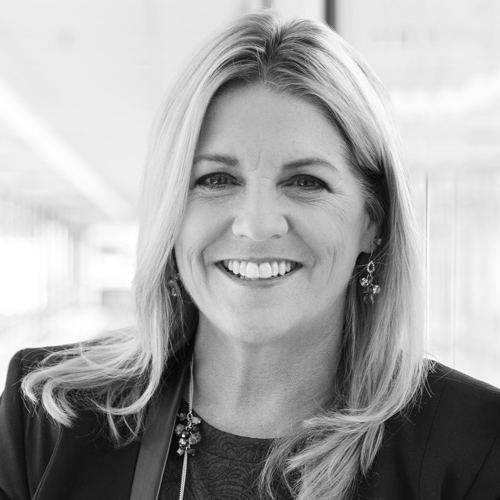Harry Crane likes to say that he can hold a flashlight steadier than anyone. Born into a family with not much money to replace anything broken or faulty, Crane was always trailing his father as he made repairs in the house, and his job was to hold that flashlight and shine a light on the work being done. That instilled in him a passion for fixing anything and everything that has not dwindled to this day.
“As a kid, I was always playing with LEGOs or building something in the garage,” Crane recalls. “I never was happy with the way it was, so I would tear it apart and build it again. I was always trying to tweak things.”
Because Crane understood at an early age that his parents wouldn’t have the finances to send him to college, he set his sights on becoming an auto mechanic. But his father, who worked as a vending machine repairman, was constantly urging his son to look for a career outside of manual labor that would give him a better life.
Still focused on auto work, a meeting with a college counselor in high school enlightened Crane to look into other opportunities. He knew that paying for college would be challenging, but a partial scholarship to play football at Grand Valley State University made it less daunting. Still, Crane felt the weight of paying for college on his own. He would go to school, then football practice, and work later that night. During his summers, he laid brick and poured cement for about twelve hours a day and then worked out later to keep in shape for football.
Eventually, Crane earned his degree in economics and statistics, dreaming of working at the Federal Reserve and being the next Alan Greenspan. By the time he graduated, however, he was entering a tough market. He joined Electronic Data Systems as a systems engineer, mainframe developer, and programmer, working mostly on the General Motors account. Soon, he moved on to Arthur Andersen as a consultant, where he was exposed to a wide variety of industries.
He says that the diversity of experience showed him that his skills were applicable almost anywhere. “Everything I did was around process improvement,” he says. “It was all the same, just a different context. When we improve processes, the intent is not just to change the process, but also to make companies more efficient in speed and quality and help them become more financially successful.”
By the time he joined McLaren Health Care in 2014 as the corporate vice president of revenue cycle, Crane had held two other jobs in healthcare. He says he has found medicine attractive in part because of the stage it finds itself at, where process improvement is crucial if the industry is to catch up to others.
“Something that has helped me a lot in healthcare was working in the auto industry,” Crane says. “Twenty or thirty years ago, process improvement was the price of entry for the auto industry. Then, lean manufacturing came around. That’s now just getting into healthcare because we’re getting paid for quality and performance.”
At McLaren, Crane is responsible for everything from the time a patient arrives to when they are discharged and the final payment is made. He manages the entire process of revenue cycle. Everything from patient access—who the patient is, registering them, admitting them, and verifying their insurance—to health information management, coding, working with doctors to ensure they are documenting accurately for the safety of patients, patient accounting, billing payers, and collecting from patients. He says his staff is present at every clinic, every office, and every hospital in the system.
During his time at McLaren, Crane has already made a major impact. All of the changes fall under the umbrella of the “One McLaren” initiative—the institution of a single revenue cycle for the company’s many locations. Crane says that technology is essential for this process.
“It’s become so complicated for a health system to get paid that you can’t do things manually anymore,” he says. “We process more than four hundred thousand claims per month, so manual is simply not possible. When I came in, we had eleven autonomous hospitals that were each doing their thing their own way. We had more than twenty-six different versions of clinical systems to work with. You can imagine that it’s immensely complicated to try to bring that all into one process and get a single revenue cycle.”
Despite these immense complexities, Crane not only has the ability to navigate this terrain, but also inspire others.
“Harry Crane is the most progressive man in healthcare and a revenue cycle visionary,” says Jennifer Rakolta, president of Advomas. “His commitment to exploring new ideas inspires everyone that works with him. You believe in Harry because he believes in you.”
In addition to those complexities, Crane says that many companies use technology as a crutch, believing it can be a magic bullet. But Crane believes a good process is the foundation and that the tech is only there to support it. “A simple process can go a long way,” Crane explains. “When you put tech on top of it, you gain efficiency.”
One example is the way the company routes claims throughout the system to ensure accuracy. In the past, documentation was scanned, emailed, couriered, and discussed over the phone, so there was no clean process to resolve claim issues caused by documentation. As a result, Crane began to ask how to create a process that would route claims to the right person at the right time so that issues can get resolved quickly and everyone would be notified at the same time. That approach is now being taught for all of the hospital’s processes.
As the “One McLaren” vision begins to become a reality, Crane says his process improvement antenna is still always on. Even when he walks into a place such as McDonald’s, which is universally lauded for its efficiency of processes, Crane says he still thinks about how it might become more efficient. It’s as if Crane never let go of that flashlight he held for his father as a kid, and he shines that light on everything he sees today.
Centralizing Billing Operations
Because of Harry Crane’s proficiency when it comes to improving processes, hundreds of jobs came to Shelby Township as McLaren Health Care centralized its billing and collections into one location from thirteen separate offices. The move was intended to improve insurance billing effectiveness that could increase revenue by about $30 million annually.
McLaren offered a little more than three hundred full-time patient accounting employees at twelve hospitals with the opportunity to move into the new 57,000-square-foot building. McLaren’s medical group billing department also made the move. Crane says the move was not made to cut costs but rather to have standard processes and operate one way across the health system. This has reduced denials, and billing has become more accurate thereby increasing revenue and reducing costs.
Photo: Kristiana Rose

